Type of resources
Topics
Keywords
Contact for the resource
Provided by
Years
Formats
Representation types
Update frequencies
Scale
Resolution
-
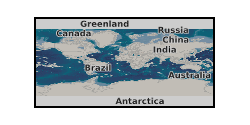
In March 2010, the Scottish CCS (Carbon Capture & Storage) Consortium began an extensive Front End, Engineering and Design (FEED) study to assess what would be required from an engineering, commercial and regulatory, perspective in order to progress the CCS demonstration project at Longannet Power station in Scotland through to construction. The study yielded invaluable knowledge and the resulting material are available for download here. The UK Government's basic premise for financially supporting CCS demonstration is to facilitate further commercial scale CCS projects in the UK and internationally. DECC have made knowledge transfer activities a key requirement of the UKCCS Demonstration Competition. The Consortium identified stakeholder groups particularly relevant for knowledge transfer activities. Stakeholders were categorised in terms of: Knowledge needs; Potential to influence CCS deployment; Experience/ expertise they can bring to demonstration knowledge; Potential to disseminate demonstration knowledge; The assessment identified six priority audience groups: Academics, Environmental NGOs, Finance and Insurance, Industry, Initiatives and Developers and Regulatory and Policy. The Stakeholder Profiling Interviews sought to answer the following questions: Who are the key CCS stakeholders? What information are these stakeholders interested in from a CCS demonstration? What are the preferred methods for key stakeholders to receive and access information? Are the key stakeholders interested in interacting with CCS demonstrations, and if so, what is the preferred method to facilitate this interaction? This section of the FEED Close Out Report combines over 30 stakeholder interviews, with examples of knowledge transfer leading practice. Other FEED workstreams considered wider stakeholder engagement, for example, local community engagement and public communication. The appropriate summary section from the Feed Close Out Report can be downloaded as a PDF (Stakeholder profiling.pdf). The main text of the FEED Close Out Report, together with the supporting appendix for this section can be downloaded as PDF files. Note this dataset is a duplicate of the reports held at the National Archive which can be found at the following link - http://webarchive.nationalarchives.gov.uk/20121217150421/http://decc.gov.uk/en/content/cms/emissions/ccs/ukccscomm_prog/feed/scottish_power/stakeholder/stakeholder.aspx
-
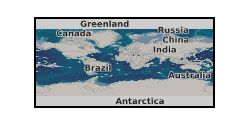
During 2010-11, as part of the Carbon Capture & Storage (CCS) Demonstration Competition process, E.ON undertook a Front End Engineering Design (FEED) study for the development of a commercial scale CCS demonstration plant at Kingsnorth in Kent, South East England. The study yielded invaluable knowledge and the resulting material is available for download here. This chapter presents the results of studies into the undersea storage reservoir for CO2, in the Lower Bunter sandstone of the depleted Hewett natural gas field, the design recommendations for new wells and recommendations for abandonment of existing wells. The study addresses the following areas; Storage Reservoir integrity and capacity; Construction and completion of wells; CO2 properties and injectivity; Abandonment of existing and new wells; Monitoring; Hazard Identification (HAZID) and Risk Assessment. Some of the key aspects of the Wells and Storage technical design are; Wells that have already been abandoned using conventional methods pose a risk of future leakage to the surface and thereby compromising the integrity of the CO2 store; Data acquisition can be difficult: ensure that all required data sets are identified and make requests as early as possible to ensure quality data is obtained resistant standards; The CO2 equation of state and phase diagram is paramount in designing the injection process. Temperature and pressure of the CO2 must be carefully specified to avoid uncontrolled condensation or vaporisation; Many standard components and materials used in the offshore industry are suitable for use in CO2 flowing regime injection applications. Particular attention must be paid to corrosion resistance and longevity in a CO2 environment; For drilling injection wells into a depleted hydrocarbon reservoir, the principal challenge is drilling into low pore pressures, whilst minimising formation damage. Further supporting documents for Chapter 7 of the Key Knowledge Reference Book can be downloaded. Note this dataset is a duplicate of the reports held at the National Archive which can be found at the following link - http://webarchive.nationalarchives.gov.uk/20121217150421/http://decc.gov.uk/en/content/cms/emissions/ccs/ukccscomm_prog/feed/e_on_feed_/storage/storage.aspx
-
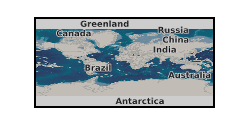
This study was carried out jointly by the University of Birmingham and the British Geological Survey. The report addresses the feasibility of using novel quantum-technology-based gravity sensors to monitor underground CO2 storage. Of particular interest is the applicability to upcoming near-surface leak monitoring trials that the British Geological Survey will be conducting at its test site. UKCCSRC Flexible Funding 2021: Feasibility study into Quantum Technology based Gravity Sensing for CCS
-
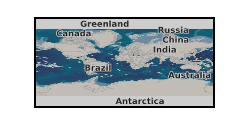
4 tables, and accompanying references, from paper entitled ‘Increased biomass and carbon burial 2 billion years ago triggered mountain building’. Tables record orogen depositional ages, deformation ages, Total Organic Carbon contents and organic carbon isotope compositions, for 20 orogens of Palaeoproterozoic age.
-
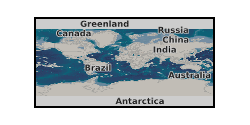
In March 2010, the Scottish CCS (Carbon Capture & Storage) Consortium began an extensive Front End, Engineering and Design (FEED) study to assess what would be required from an engineering, commercial and regulatory, perspective in order to progress the CCS demonstration project at Longannet Power station in Scotland through to construction. The study yielded invaluable knowledge and the resulting material are available for download here. This section of the report contains a high-level monthly summary of the total costs incurred performing the Consortium's FEED study. This information is provided with the aim of enabling potential developers of CCS projects to estimate up front FEED costs. A detailed cost breakdown is also provided for each of the key parties within the Consortium in the form of Cost, Time and Resource (CTR) information in PDFs below, under the following references: UKCCS - KT - S1.0 - SP - 001 ScottishPower CTR Summary; UKCCS - KT - S1.0 - ACC - 001 Aker Clean Carbon CTR Summary; UKCCS - KT - S1.0 - NG - 001 National Grid CTR Summary; UKCCS - KT - S1.0 - Shell - 001 Shell CTR Summary; The detailed CTR information provides a breakdown of the actual labour effort used for the totality of the FEED scope of work, presented by month and by CTR activity, the type of expertise used, the number of hours worked and the associated costs. The split between internal and external costs is shown, together with the original budget estimates developed for each CTR prior to commencing FEED. The appropriate summary section from the Feed Close Out Report can be downloaded as a PDF (FEED cost.pdf). The main text of the FEED Close Out Report, together with the supporting appendix for this section can be downloaded as PDF files. Note this dataset is a duplicate of the reports held at the National Archive which can be found at the following link - http://webarchive.nationalarchives.gov.uk/20121217150421/http://decc.gov.uk/en/content/cms/emissions/ccs/ukccscomm_prog/feed/scottish_power/feed_cost/feed_cost.aspx
-
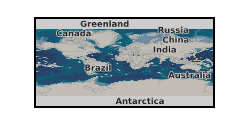
In March 2010, the Scottish CCS (Carbon Capture & Storage) Consortium began an extensive Front End, Engineering and Design (FEED) study to assess what would be required from an engineering, commercial and regulatory, perspective in order to progress the CCS demonstration project at Longannet Power station in Scotland through to construction. The study yielded invaluable knowledge and the resulting material are available for download here. This section of the report aims to inform potential developers of CCS of the impact of risks on the design of large-scale CCS. It discusses the ScottishPower CCS Consortium approach to risk management, looking particularly at the identification and mitigation of specific areas of risks during FEED and the mitigating actions required for the major residual risks. The section covers five key areas: Overview of the risk assessment process through FEED, including mitigation measures, major movement of the Top 50 risks on the Risk Register, and current active risks; Mitigation strategies for major project risks; Mitigation strategies for those risks with the potential to cause significant delay to the Overall Project Programme; Allocation and insurability of risks; Integrity and risk assessment of existing plant to be integrated; From the outset of FEED, risk management was co-ordinated by the Risk Workstream. The Risk Workstream included representatives of each of the Consortium Partners and Aker Clean Carbon. The Risk Workstream had a remit to capture, codify and report on progress with risk management throughout the study. The management of the risks themselves remained with the risk owners. The Consortium's risk management strategy was based on the provision of a cross-Consortium, over-arching risk management framework. This was developed to: Provide visibility of the Consortium's risk exposure Make best use of the Consortium Partners' risk management experience Facilitate the assessment of the impact of changes within the scope of one Partner's risk profile to the others Encourage the identification of risks at Partner interfaces Provide consistent risk reporting across the Consortium in line with agreed requirements Each Consortium Partner was responsible for reporting monthly on their risks to the Consortium risk lead, who in turn collated the Consortium Partner updates and reported the overall Consortium risk status to the Consortium Management Office and DECC to show how the total risk value changed over the course of FEED. The appropriate summary section from the Feed Close Out Report can be downloaded as a PDF (Risk management.pdf). The main text of the FEED Close Out Report, together with the supporting appendix for this section can be downloaded as PDF files. Note this dataset is a duplicate of the reports held at the National Archive which can be found at the following link - http://webarchive.nationalarchives.gov.uk/20121217150421/http://decc.gov.uk/en/content/cms/emissions/ccs/ukccscomm_prog/feed/scottish_power/risk/risk.aspx
-
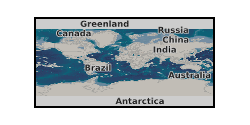
Teesside Collective is a cluster of leading industries with a shared vision: to establish Teesside as the go-to location for future clean industrial development by creating Europe’s first Carbon Capture and Storage (CCS) equipped industrial zone. The Teesside Collective reports and publications including the Blueprint for Industrial CCS in the UK can be accessed from http://www.teessidecollective.co.uk/category/reports-publications/.
-
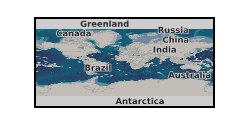
Data produced from NERC Grant NE/L000059/1 - IODP Exp 335 report which is open access and includes all the observations and other data generated on the Expedition. http://publications.iodp.org/proceedings/335/335toc.htm
-
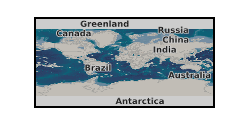
During 2010-11, as part of the Carbon Capture & Storage (CCS) Demonstration Competition process, E.ON undertook a Front End Engineering Design (FEED) study for the development of a commercial scale CCS demonstration plant at Kingsnorth in Kent, South East England. The study yielded invaluable knowledge and the resulting material is available for download here. This chapter presents the Environment and Consents Reports produced during the current FEED stage. One of the key objectives of the FEED study was to develop information across the project chain, from CO2 generation to storage in sufficient detail to enable production of applications for environmental consents. A Consents Philosophy was generated upon commencement of the FEED to develop a programme of work to achieve this objective, and identified the following groups of consents: Power and capture plant: 1989 Electricity Act - Section 36; Onshore pipeline: 1990 Town and Country Planning Act; Offshore Pipeline; Offshore Platform; Storage Consents. Some keys aspects of the FEED Consents study are: There were significant uncertainties at the outset of the project regarding the types of consent required. This was a consequence of the planning consent for Kingsnorth Units 5 and 6 having already been submitted in 2006, new government policy and draft regulatory guidance, and ongoing government consultations on regulatory issues; Many of these issues were resolved, enabling development of consent applications for the integrated power and capture plant and onshore and offshore CO2 pipeline. However in some cases, particularly for the offshore platform and storage, uncertainty remained throughout the project. In these instances the deliverable was an interpretation of the regulatory requirements that will need to be reviewed and taken into account to obtain consents during subsequent stages of the project. Further supporting documents for chapter 9 of the Key Knowledge Reference Book can be downloaded. Note this dataset is a duplicate of the reports held at the National Archive which can be found at the following link - http://webarchive.nationalarchives.gov.uk/20121217150421/http://decc.gov.uk/en/content/cms/emissions/ccs/ukccscomm_prog/feed/e_on_feed_/environment_/environment_.aspx
-
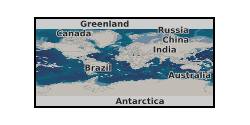
The two earthquake scenario narratives are communications tools created to engage the local population and policy makers in Weinan city. They will be uploaded on the Overseas Development Institute website and be publicly accessible.
 NERC Data Catalogue Service
NERC Data Catalogue Service